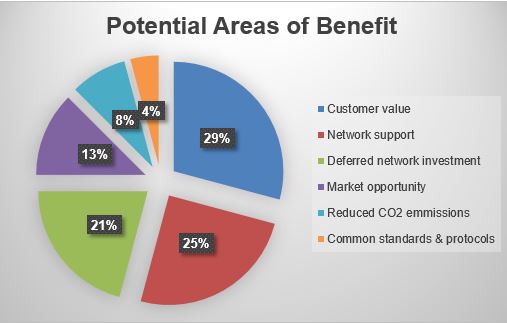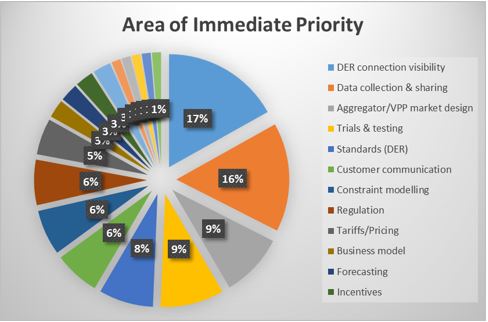It’s getting harDER to cope
Recently, the Victorian Government announced several energy initiatives as part of its target of sourcing 40 per cent renewables by 2025. These include: providing subsidies to help 10,000 households install battery storage in their homes; rebates and zero-interest loans for rooftop solar, and a package for solar hot water systems. The South Australian and NSW Governments have made similar announcements.
These initiatives will increase the pace of transformation on the customer side of the meter and lead to future generation being dominated by systems that are highly distributed and very small scale – changing the way households and businesses use energy.
These announcements are made in the hope to provide consumers with access to cheap and reliable power, but this may not always eventuate. If not integrated properly, these opportunities could lead to major challenges for the energy system that will make it more unstable and expensive.
What is the issue?
At a federal level, much of the political energy debate centres on the transition from coal to renewable generation, including grid scale storage like big batteries and pumped hydro (i.e. Snowy 2.0), and the cost of energy. Meanwhile, consumers and state jurisdictions have forged ahead with the deployment of household solar PV and storage.
The Open Energy Networks program, by Energy Networks Australia and the Australian Energy Market Operator (AEMO), identifies that mass connection of household PV and storage could create significant issues for networks and customers. Issues include:
- Not knowing the location of the new grid-connected systems, causing difficulty in operational forecasting;
- The response of household solar and storage to disturbances may also have significant impacts on system stability and the high penetration levels could hinder the successful operation of emergency frequency control mechanisms;
- Downgraded electricity quality, which in the case of voltage spikes could shorten the lifespan of household electrical appliances or cause them to trip off;
- Households could be constrained from exporting electricity back to the grid – increasing the time it will take for them to receive a return on their solar and storage investment. In some cases customers could be denied permission to connect their system to the grid if their street feeder is already overloaded; and
- Electricity bills could rise if distributors are forced to make significant investments to enable more DER to connect.
Apart from solar and batteries, the increased uptake of electric vehicles will change the way we use electricity in our homes and businesses. Owners charging their cars at home after work, for example, could lead to a doubling of demand – which has major implications for the design and management of the grid and if not managed appropriately, could lead to the system breaching its current capacity during peak load times.
Optimisation of Household PV and Storage
In the not too distant future, it is easy to envisage an Australian energy system with millions of homes and businesses with rooftop solar, a battery system, a charging station for an electric vehicle and a household energy management system.
Based on the modelling undertaken by CSIRO for the Energy Networks Australia-CSIRO Network Transformation Roadmap 2017, optimising and coordinating these household solar and storage assets could provide a cumulative value of $158 billion by 2027 and be worth more than 50 per cent of the National Energy Market‘s value by 2050. This value would be released through broad efficiencies to the system, improved system utilisation, reducing the need for network infrastructure and customers being able to exchange value with the grid to reduce electricity bills.
If managed correctly, these household assets could be utilised to replace aging grid scale power stations. This can be done through the development of virtual power plants (VPPs) that involve the aggregation and coordination of individual rooftop solar, batteries and other assets so they can be combined to provide dispatchable power, similar to a peaking power plant.
For this to happen, it is critical we develop systems that allow for monitoring and real-time data collection and transfer. This shift to distributed energy also creates commercial issues and regulatory challenges that will need to be resolved.
The figure below outlines the key benefits of optimisation as identified by stakeholders through the Open Energy Networks Consultation.

Collaborative approach
The Open Energy Networks program is seeking to work with all stakeholders on how best to integrate DER into Australia’s electricity grid to help ensure quality and reliability of supply and lower power bills. To do this, not only do we need to solve the technical issues, but we need to find ways to incentivise customers to allow access to their solar and battery storage devices and appliances. We also need to identify new business models to drive this innovation so it is automated and updated or new market rules will be required to allow these unregulated assets to be properly valued as part of the energy mix.
Consultation has also identified some key issues that need to be addressed in the immediate future as ‘no regret actions‘ (see Figure below) that will allow for the immediate risks to the system to be managed and renewable energy initiatives, such as those announced by the Victorian Government, to be implemented without negative impacts on the system.

However, while it is too early in the Open Energy Networks program to say which new framework, model or new technologies/platform might ultimately be the best way to integrate and optimise distributed energy, one thing is sure: we must take into account the customer side of the equation and develop holistic solutions for the energy system.



